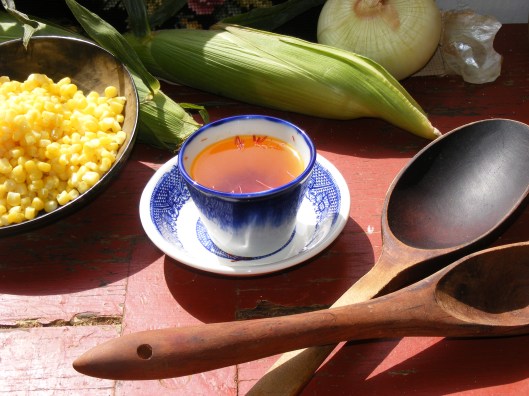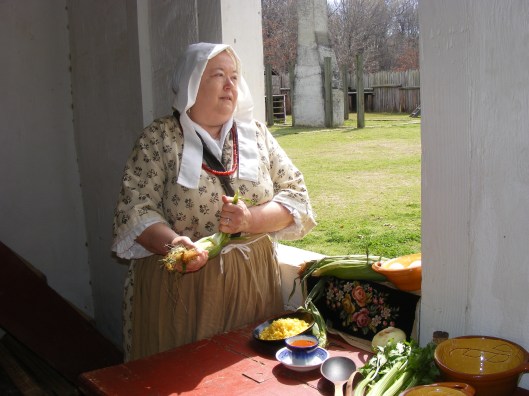I wonder how many Americans actually know the dangers of growing and consuming genetically modified (GM) foods and how many continue to have blind trust regarding the quality of food found in American markets. GM corn has been altered to make it herbicide resistant (Roundup Ready) and to produce its own insecticide (Bt Toxin). In short, GM corn can kill insects that try to eat it, and it can kill weeds that grow around it.
I am no geneticist or botanist, and do not presume to advise, but I am intelligent enough to do the research and form my own opinion regarding the safe consumption of such corn, which coincidentally agrees with that of the Institute for Responsible Technology. “’Several animal studies indicate serious health risks associated with GM food’, including accelerated aging, faulty Insulin regulation, and changes in major organs and the gastrointestinal system. The American Academy of Environmental Medicine (AAEM) asked physicians to advise their patients to avoid GM foods.”
Scientists with the FDA (Food and Drug Admin.) repeatedly warned that GM foods can create side effects including accelerated allergies, toxins, new diseases, and nutritional problems which would be extremely hard to detect in patients exhibiting varied symptoms. They recommended long-term safety studies but unlike other parts of the world where intellect prevailed, America chose to ignore the warnings. Even China has refused shipments of corn from America because they fear the effects of GM corn.
Let’s look at some of the specific issues addressed by the IRT.
* Thousands of sheep, buffalo, and goats in India died after grazing on Bt cotton plants.
* Mice eating GM corn for the long term had fewer, and smaller babies.
*More than half the babies of mother rats fed GM soy died within three weeks and were smaller.
* Testicle cells of mice and rats on GM soy changed significantly.
* By the third generation, most GM soy-fed hamsters lost the ability to have babies.
* Rodents fed GM corn and soy showed immune system responses and signs of toxicity.
* Cooked GM soy contains as much as 7-times the amount of a known soy allergen.
* Soy allergies skyrocketed by 50% in the UK, soon after GM soy was introduced.
* The stomach lining of rats fed GM potatoes showed excessive cell growth, a condition that may lead to cancer.
* Studies showed organ lesions, altered liver and pancreas cells, changed enzyme levels, etc.
“The only published human feeding experiment revealed that the genetic material inserted into GM soy transfers into bacteria living inside our intestines and continues to function”, so that long after we stop eating it the proteins may remain inside us. Sound harmless? The study showed that if an antibiotic gene inserted into most GM crops transfers, it could create super diseases resistant to known antibiotics. If that isn’t enough, think about this: “if the gene that creates Bt toxin in GM corn were to transfer, it might turn our intestinal bacteria into living pesticide factories.”
Do the “benefits” of GM corn outweigh the incredible risks? Apparently not. A 2012 nutritional analysis found, “GM corn lacking in vitamins and nutrients when compared to non-GM corn….Non-GMO corn is 20 times richer in nutrition, energy and protein”, than GMO corn.”
Let’s break this down – we’ve removed a significant part of the nutritional value from the corn, drastically increased its potential for human allergies to corn and soy, and we’ve left ourselves exposed to potentially catastrophic health risks. How can there be any remotely significant reason for allowing these products in American food other than to pad the purses of CEO’s from companies that lobbied against labeling of products that contain GM corn?
The list of companies who want to keep us in the dark about these dangers and who contributed an exorbitant amount of money to fight being required to list their presence on food labels in America include Heinz, Kellogg’s, Nestle, Coca-Cola, Smuckers, Pepsico, ConAgra, Kraft, McCormack, DuPont, Del Monte, Hormel, Sara Lee, Campbell’s, Dole, Bumble Bee, Morton salt, Smithfield, Idahoan, Land of Lakes, Rich’s, Godiva, General Mills, Bayer, etc. [The list is found elsewhere on this blog].
How many of Kellogg’s or General Mills’ cereals contain corn? How many products which may appear corn-free and safe enough, such as Ocean Spray, Nestle Quick, or soft drinks, contain corn sweetener which may also come from GM corn without any warning on the label? There’s a reason these companies didn’t want us to know GM corn is in their products.
How can we avoid the GM dangers? As one of my best buds pointed out this morning, we can grow our own corn. Growing heirloom corn would help to reduce the amount of GM corn we consume, but how difficult is it to keep our home-grown corn safe from the airborne pollen drift and cross-pollination with potentially GM corn grown by our neighbor? You won’t like the answer although there are reports that downplay the dangers.
The Division of Agriculture and Natural Resources at the University of California published results which state, “Under field conditions, 97% or more of the kernels produced by each plant are pollinated by other plants…Pollen is light and can be carried considerable distances by the wind”. They went on to say there are limits as to how long pollen can stay viable, and a belief that the bulk of the pollen settles to the ground within 50 feet of the donor plant, but they also said, “Once released from the tassels into the air, pollen grains can travel as far as ½ mile in 2 minutes in a wind of 15 miles per hour”.
Do we trust that if we save seed from our pure heirloom corn to plant next year, that a half mile away someone hasn’t planted GM corn which may cross-pollinate with some of it? Time will tell. In the meantime we can search for non-GMO labels – while it is not a requirement to list the presence of GM foods on labels, some companies want consumers to know their products are GMO free, we can grow our own, we can buy certified organic, and lastly, we can follow the Non-GMO Project studies and lists of safe foods. See their website for further information.






















You must be logged in to post a comment.